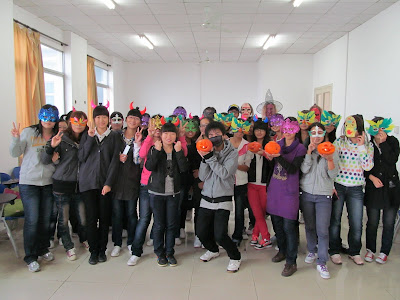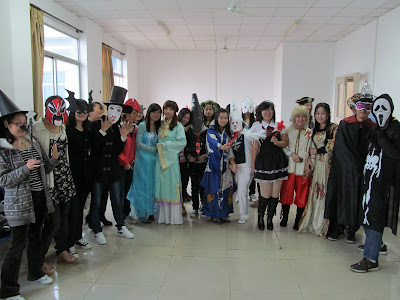The last time I visited Labrang was December of 2008, 9 months after the 2008 Tibetan Uprising saw a wave of protests, demonstrations, and riots break out across the Plateau. Restrictions against foreign travelers had only been lifted a week or two before I arrived, and would end up being re-imposed weeks after I left. Between closed hostels, shuttered restaurants, and an elevated Chinese paramilitary presence, the mood last time was very different than the tourism extravaganza of National Day 2011. Troupes of Chinese photographers like our friends from back in Taktsang besieged Labrang this time. Hotels were open- but sold out. We reluctantly booked a dorm room at the Overseas Tibetan Hotel, whose gross dorms I had hoped to avoid this time.
Still, the biggest presence at Labrang, by far, is that of Tibetans themselves. Pilgrims circle the monastery constantly, orbiting it in a clockwise flow that starts before the sun rises and continues until it sets. Some aren’t content to merely spin the prayer wheels and walk the trail- they prostrate their way around the entire place, a 3km ordeal that sees them touch their head the ground, stand up, walk one body length forward, then throw themselves down again. Others go even further, essentially doing it all sideways. They face the center of the monastery at all times as they work their way around, taking only a small step sideways each time. We watched from a restaurant by the side of the monastery as one such pilgrim finished his circuit of the monastery at 3:30 in the afternoon, presumably having started long before any of us woke up.
The prayer wheel trail- one man steps out and takes a break while others keep spinning the wheels:

The eastern end of the monastery:

Monastery goat:

One of the buildings near the center, where we briefly got lost in a maze of courtyards and halls:

The Gungthang Stupa. The boy on the stairs is carrying lunch for the monks, who were working up a storm of chanting on the inside:

This unfriendly-looking fellow was painted on the doors of the neighboring Red Hat temple. The skulls on his crown seem to be pretty outgoing, on the other hand:

Another monastery goat. A little girl had been teasing this one with the packet of food- until it (gently) butted her with the horns, and she ran away screaming:

I find that people who speak ill of Tibetan food tend not to have ever been there. Our favorite was the Nomad Restaurant, a third floor restaurant overlooking the crossroads at the eastern end of the monastery, where a constant flow of monks, nomads, pilgrims, and merchants mix it up all day. An all-Tibetan meal we had consisted of, from left to right:
1. Tsampa, a staple made of roast barley mixed with butter, sugar, and a little water. It’s then compacted into cubes and eaten, and tastes a little like cookie dough and a little like what I’d imagine raw Quaker Oats Squares cereal would taste like. Delicious.
2. Fried momos. Tibetan dumplings can be pretty different than their Chinese cousins. These ones were meatier, with a little bit of soup on the inside. It seemed like they were steamed first, and then quickly fried at the end to give them a crispy exterior. I’ve had some good momos in the States, but nothing near as good as these.
3. ‘Nomad’ grilled lamb with bell peppers. I don’t know if nomads actually eat this one, but it was heavy on cumin and garlic. If nomads do eat this I might have to reconsider my line of work.
4. Vegetable pakleb. A fried bread filled with minced green vegetables and a little bit of ginger.

Not pictured- yak butter tea, and my Tibetan black tea. It’s a confusing drink, made of rock sugar, dried fruit, and a mess of sticks and tea leaves that give it a smoky flavor.
Next time- the rest of Labrang, and our side trip to Tarzang Lake.





















































